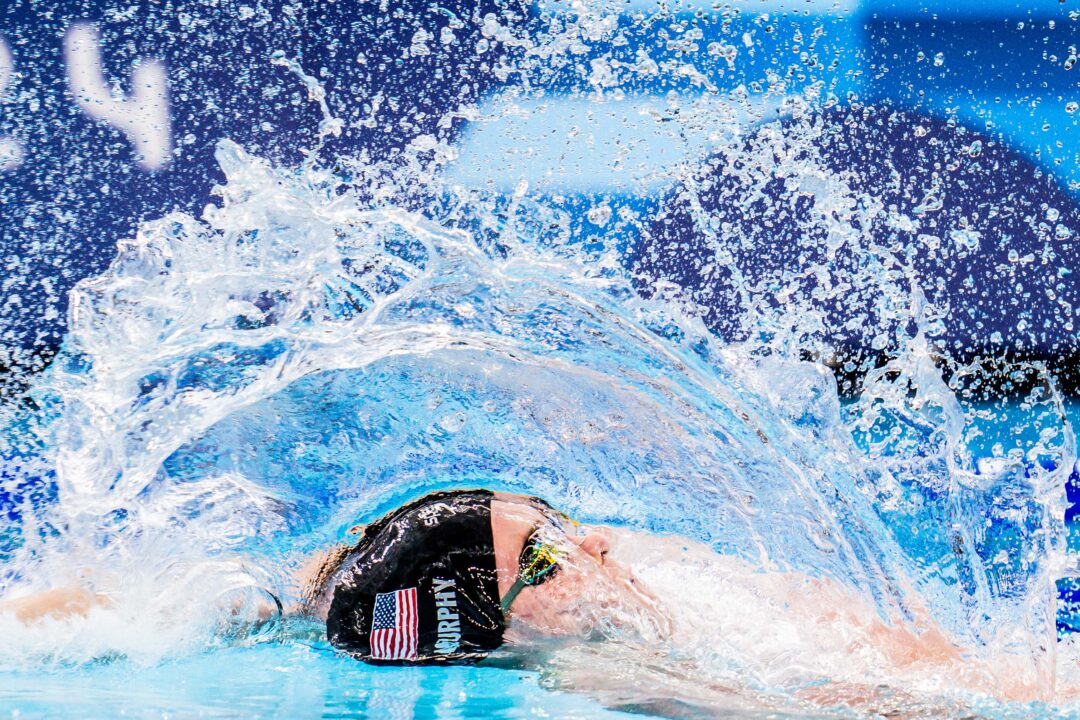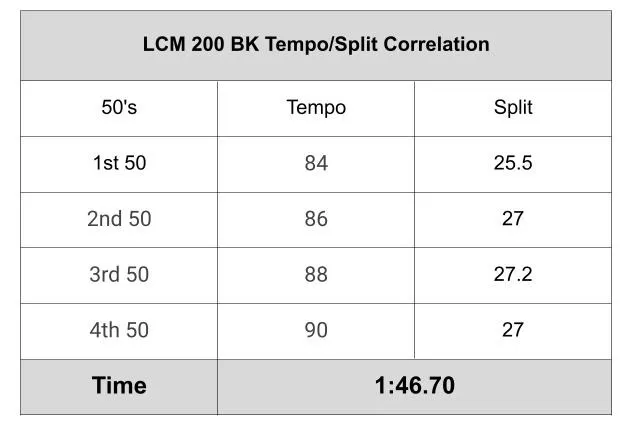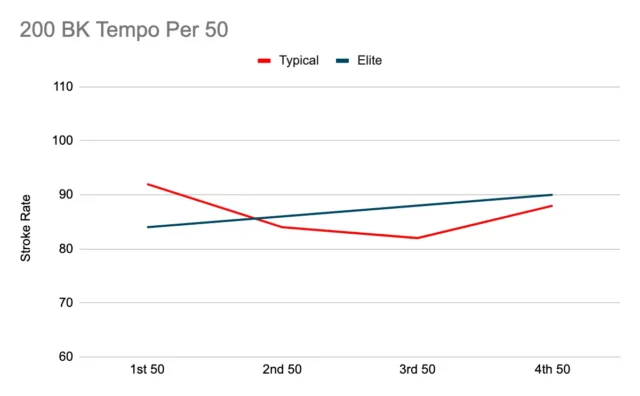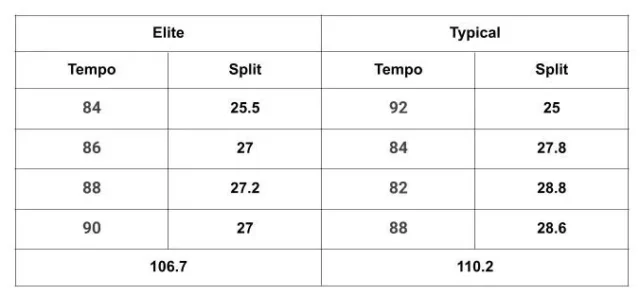Courtesy: Doug Cornish, the founder of Swimpler. Follow Swimpler on Substack here.
Swimmers and coaches should be designing and evaluating race strategies. Race strategies, when broken down into their simplest form, are patterns of aggression manipulated to bring about a desired result.
Tempo is the best indicator of aggression patterns.
TAKING TEMPOS
There are two main ways coaches take tempos.
- Seconds/Cycle
- Cycles/Minute
Seconds/Cycle
A cycle is a full movement of both arms — from one hand entry to the next entry of the same hand.
Seconds/cycle is a simple tempo data point that can provide an unbelievable map of a race. To take this tempo, simply time a cycle from the moment one arm hits the water until the moment the same arm hits the water the second time. The result is the length in seconds of that cycle.
Elite Race Mapping
Some coaches of elite backstrokers take the seconds/cycle for each cycle of a race by using the split function on their stopwatch. They do this as a means to “map” the aggression patterns when evaluating race execution. If tempo is too high early and fades late, coaches and swimmers can use the information to adjust strategy for a better outcome.
When I am evaluating an elite-level backstroke swim, this is my chosen method.
The downside of that method is that it is prone to operator error. Where .1 of a second can skew the data and subsequent comprehension, it’s important to understand and practice this method for accurate data.
Cycles/Minute
My favorite way to take tempos for race evaluation and feedback during a meet in which I may observe multiple swimmers in one heat is to use a stopwatch that has a tempo feature. Most tempo features have an algorithm that calculates cycles per minute based on timing a certain number of cycles. This averages multiple cycles and eliminates significant user error.
To give the swimmer more useful feedback, couple the split with the tempo. I used the following format which is easily written onto a heat sheet:
200 BACKSTROKE RACE STRATEGY
At one point, I had an entire yellow notepad completely filled with the tempo and split correlations for elite-level 200 backstroke races. The last time I counted, it contained over 200 tempo/split correlations.
I started with swimmers seeded at Sectional times or better. Using the tempo mode on my stopwatch, I registered the split for each 50 and the tempos used to achieve it. The list ended up including six different backstroke Olympians.
Here’s what I found:
- When tempo was consistent, velocity was slowing, and splits were increasing.
- When splits were consistent, velocity was consistent, and tempo was increasing.
Here is a simplified model if you would like a foundation from which to teach elite-level 200 BK:
Begin with the highest tempo that they can increase 4-6 beats per minute without a tempo bleed over the course of the race.
Here is a representative sample of the impact that controlling your tempo could have on your race. The example below is made up, but it is representative of the types of splits you will see if you begin doing your own tempo/split correlations.
When analyzing 200 BK races, provide feedback on the tempo/split correlations. It gives the athletes much more information than the splits themselves.
DANCING QUEENS
You should be spending considerable time teaching and manipulating tempos. Using a tempo trainer is easy and beneficial.
Although tempo trainers cue you to the exact tempo, there are downsides. The beeping can be perceived as incessant and distracting. Swimmers who are prone to headaches or migraines tend to struggle.
Swimmers love it when coaches crank the music. Use it to your advantage, especially if you have underwater speakers. Design a set correlating the desired tempos and songs at that tempo.
Let the kids sing along and have fun. Dialing into elite tempos is not easy. Energy needs to be high.
Intro-level:
- Have them treat their arms as drumsticks and the water as the drum to match their stroke to the desired tempo. Essentially, timing their entry to the beat.
Advanced level:
- Have them time the finish of their stroke to the beat.
Pro-Level:
- Add a breathing pattern. Breathe in on finish of strong arm, exhale on finish of weak arm. When we exhale, the core contracts. Weightlifters use this as a key component of their technique. When you couple your exhale with the finish of your weak arm, it can balance out their stroke.
If you coach younger swimmers and don’t want to get too far into the weeds with information, start by teaching them to swim to the beat of different songs.
You are a playlist away from an awesome backstroke practice.
FINAL THOUGHT
Tempo mastery is a fundamental, often overlooked skill — but those who learn to command it, control the race. Your swimmers should know what combinations of tempo yields the desired results. They should also know how to design and evaluate race strategies.
Tempo could be the key that unlocks your backstroke potential.
I’d love to hear from you on my Facebook or Instagram page. Feel free to share videos, comments, and discussions to make it a collaborative experience.
NEXT UP
I’m unsure what I will cover next. Below are some possibilities. Let me know what you think:
- Understanding the importance of technique in swimming
- Tenets of long-term success
- Do coaches have favorites
- The need to change the narrative
- Sustainable vs Unsustainable Progress
- What life lessons exactly?
- Base Position Method for Teaching Strokes





Tempo Trainers can be used to teach cycle or stroke tempo. Teach younger kids stroke tempo – 1 hand per beep to teach a balanced technique. Older swimmers can do cycle per beep so that swimmer could transition to 2 strokes without changing Tempo Trainer, i.e. backstroke at 1.4 to breaststroke at 1.4. I also like to combine free and fly, where free is easy at 1 stroke per beep into fast fly at cycle per beep, at 1.1 to 1.3.